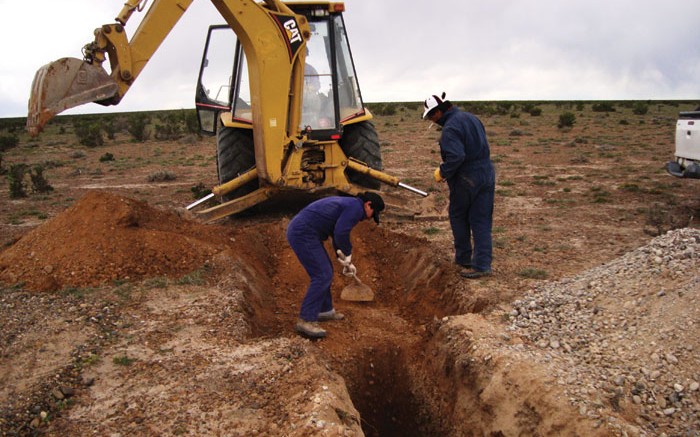VANCOUVER — It’s been a bumpy ride for foreign mining companies in Argentina over the past three years, but explorer U3O8 Corp. (TSX: UWE) saw light at the end of the political tunnel in late October when the Andean country elected the centre-right Republican Proposal party.
The new government could mark an economic shift from former president Cristina Fernandez de Kirchner’s time in office, which is perhaps best encapsulated by the expropriation of partially state-owned energy company YPF SA from Spain’s Repsol YPF in mid-2012. The previous regime also imposed a variety of financial instruments that restricted capital flows, and generally caused uncertainty in foreign investment conditions.
President Mauricio Macri’s new government has moved quickly to liberalize market conditions and normalize the country’s economy. The Argentine government has relaxed exchange controls and let the peso float, eliminated export taxes on mining products and lifted restrictions on the repatriation on earnings and dividends.
“It’s been a tough couple of years for us since our flagship project is in Argentina, but we perceived there would be a change in attitude. And it is the strongest nuclear energy market in South America, because of the pure quantity of reactors and plans for new ones,” U3O8 Corp. president and CEO Richard Spencer said during an interview.
“We took a long-term view. Thus far the government is on a positive track, and the nuclear component looks to be heavily integrated into the energy strategy alongside hydro and renewables. Our impression is that it is a business-oriented government that wants to get things moving quickly.”
Argentina has three nuclear reactors generating 10% of its electricity. The country restarted uranium enrichment at its Pilcaniyeu plant in early December, and has budgeted US$2 billion for building a fourth reactor in 2010.
U3O8 Corp.’s lead asset is the Laguna Salada uranium-vanadium project in Chubut province.
Mineralization occurs within three metres of surface in soft, unconsolidated gravel that call for low-cost mining techniques, with no blasting and crushing required.
Simple screening separation of the pebbles and coarse sand will concentrate the uranium and vanadium in the fine material and increase head grades.
Alkaline leach tests in the Guanaco area of the project recovered 94% uranium and 51% vanadium from screened fines after four hours of leaching.
The Guanaco and Lago Seco sectors of the Laguna Salada deposit host 6.3 million lb. U3O8 and 57.1 million lb. V2O5, based on indicated resources of 47.3 million tonnes grading 0.0060% U3O8 and 0.0550% V2O5. Inferred resources total 21 million tonnes at 0.0085% U3O8 and 0.0590% V2O5.
The company filed a preliminary economic assessment (PEA) on the project in 2014 that models a US$136-million operation that would produce 640,000 lb. uranium and 960,000 lb. vanadium annually over a 10-year mine life.
Based on prices of US$60 per lb. U3O8 and US$5.50 per lb. V2O5, the mine would feature a US$55-million net present value (NPV) at a 7.5% discount rate and a 24% internal rate of return.
In early November U3O8 Corp. closed a $622,625 non-brokered private placement where it issued 25 million units at 2.5¢, with a unit consisting of a share and a warrant to buy a share at 3.5¢ for three years.
The proceeds could be used to expand Laguna Salada’s resource and start a pilot operation to test unit cash costs.
The PEA assumes average life-of-mine cash costs of US$21.62 per lb. U3O8, net of a vanadium credits.
“There are two priorities at the project for us.” Spencer said. “First, the economics are strongly geared towards deposit size, so expanding the resource is a priority. We’ve already done exploration work that shows in excess of 10 million lb. uranium potential immediately adjacent to our deposit.”
Spencer notes that doubling Laguna Salada’s resources could triple the project’s NPV.
“With the money we can certainly generate results that move us toward expanding the resource. Secondly, we’re moving toward a proof-of-concept pilot plant, which is in the permit stage. Since the deposit is at surface and essentially mineralized gravel, we can add shareholder value by nailing down the processing costs,” he added.
In late 2015 the company’s board and management agreed to waive fees and salaries owing in light of tough market conditions. Spencer took a 45% salary reduction, while no further fees will be paid to directors until markets improve. U3O8 Corp. has traded within a 52-week range of 2¢ to 7¢, and closed at 2.5¢ at press time. The company has 266 million shares outstanding for a $6.8-million market capitalization.
“What’s motivating people is a real belief that one can get into production in a relatively short time frame in Argentina,” Spencer said. “Our project is simple from a technical point of view, and I’d note that though the discoveries in the Athabasca basin are extremely high grade, it takes a long time to move from discovery to production. We’re offering an opportunity that could go into production much earlier.”


Be the first to comment on "U3O8 aims to help meet Argentina’s uranium demand"